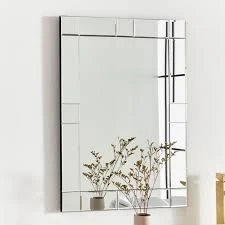

Understanding Low-E Toughened Glass Benefits and Applications
Low-Emissivity (Low-E) toughened glass has become an essential component in modern architecture, offering numerous advantages in energy efficiency, safety, and aesthetic appeal. Its distinctive features make it ideal for various applications, especially in residential and commercial buildings. This article explores what Low-E toughened glass is, its benefits, and its practical uses.
What is Low-E Toughened Glass?
Low-E toughened glass is a type of glass that has been treated to enhance its thermal insulation properties. The Low-E refers to a microscopically thin, transparent coating that reflects infrared radiation while allowing visible light to pass through. This characteristic helps to maintain a comfortable indoor climate, as it minimizes heat loss during colder months and reduces heat gain in warmer seasons. The toughened aspect indicates that the glass has undergone a process of tempering, making it significantly stronger and more resistant to breakage than standard glass.
Benefits of Low-E Toughened Glass
1. Energy Efficiency One of the primary advantages of Low-E toughened glass is its ability to improve energy efficiency in buildings. By reducing the amount of heat that escapes or enters, Low-E glass can substantially lower heating and cooling costs. This translates into significant savings on energy bills over time.
2. Comfort Buildings with Low-E glass offer a more stable indoor temperature. Occupants enjoy consistent comfort levels without the drafts and cold spots typically associated with standard glass products.
3. UV Protection The Low-E coating also blocks a significant portion of harmful ultraviolet (UV) rays. This protection helps prevent the fading of furniture, carpets, and artworks that would otherwise degrade from prolonged exposure to sunlight.
4. Noise Reduction Toughened glass inherently provides better sound insulation than regular glass. When combined with the Low-E coating, it can further diminish external noise, making indoor environments more peaceful and conducive to work or relaxation.
5. Durability and Safety The toughening process involves heating the glass to high temperatures and then cooling it rapidly, which increases its strength. Low-E toughened glass is less likely to shatter upon impact compared to standard glass, making it a safer choice for both homes and commercial spaces.

6. Aesthetic Appeal Low-E toughened glass is available in various finishes and can be incorporated into a wide range of architectural designs. Its clarity allows for maximum light penetration while still maintaining energy efficiency, making it a popular choice among architects and designers.
Applications of Low-E Toughened Glass
Low-E toughened glass finds a wide array of applications across various sectors.
- Residential Buildings Homeowners increasingly choose Low-E glass for windows and sliding doors. Its energy efficiency can significantly enhance comfort and reduce energy costs in homes.
- Commercial Buildings In office buildings and retail spaces, Low-E toughened glass improves occupants’ comfort while minimizing energy expenses. It is often used in curtain walls and storefronts.
- Skylights and Atriums The glass is also ideal for skylights and atriums, where ample natural light is desired but energy efficiency is equally important. The Low-E coating ensures that these spaces remain comfortable year-round.
- Public Infrastructure Many schools, hospitals, and government buildings use Low-E toughened glass to comply with energy codes while providing a healthy and safe environment for occupants.
Conclusion
Low-E toughened glass is a remarkable innovation in construction materials, combining energy efficiency, safety, and aesthetic benefits. Whether for residential homes or commercial buildings, the advantages of using Low-E glass are clear. As the demand for sustainable building practices continues to grow, Low-E toughened glass will undoubtedly play a significant role in shaping the future of architecture and design. Embracing this technology not only promotes environmental responsibility but also enhances the quality of life for occupants in various spaces.